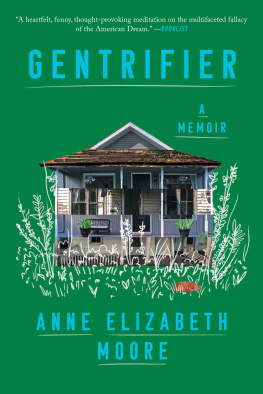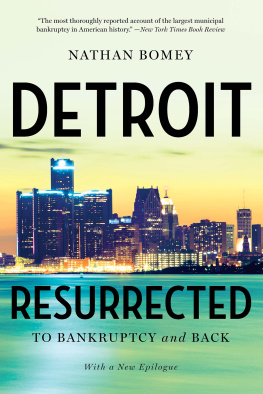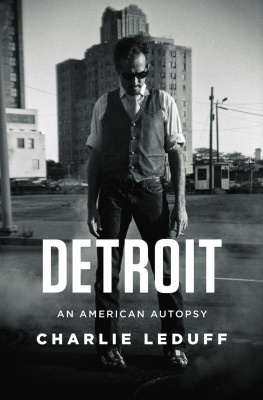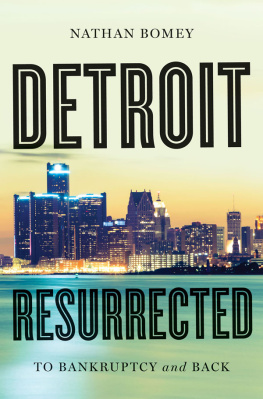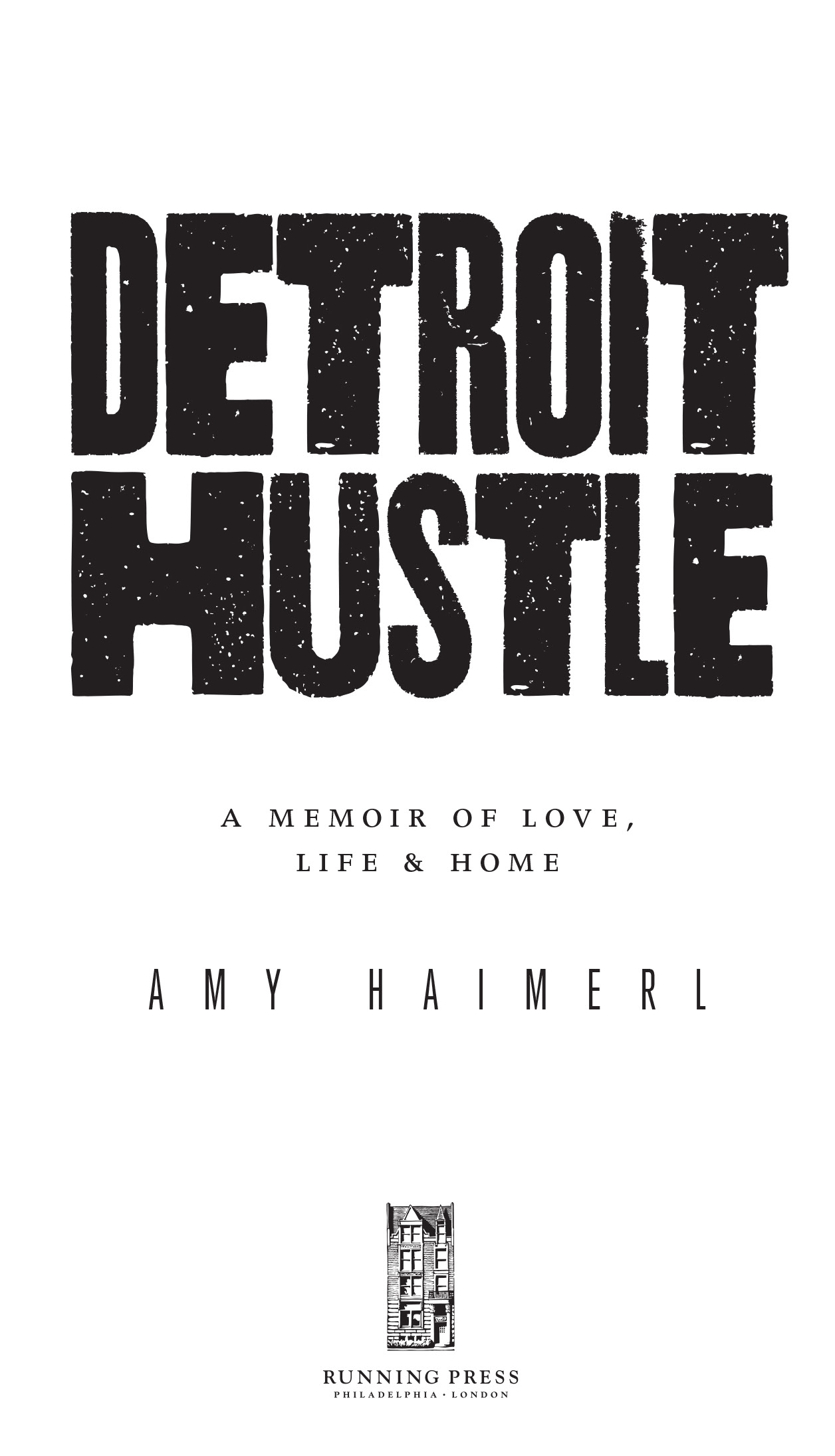2016 by Amy Haimerl
Published by Running Press,
A Member of the Perseus Books Group
All rights reserved under the Pan-American and International Copyright Conventions
Printed in the United States
This book may not be reproduced in whole or in part, in any form or by any means, electronic or mechanical, including photocopying, recording, or by any information storage and retrieval system now known or hereafter invented, without written permission from the publisher.
Books published by Running Press are available at special discounts for bulk purchases in the United States by corporations, institutions, and other organizations. For more information, please contact the Special Markets Department at the Perseus Books Group, 2300 Chestnut Street, Suite 200, Philadelphia, PA 19103, or call (800) 810-4145, ext. 5000, or e-mail .
Library of Congress Control Number: 2015959979
E-book ISBN 978-0-7624-5744-1
Cover design by Jennifer Carrow
Interior design by Sarah Pierson
Typography: Apollo MT, Trump Gothic, Thunderhouse
Running Press Book Publishers
2300 Chestnut Street
Philadelphia, PA 19103-4371
Visit us on the web!
www.runningpress.com
To my mother... who loved me first
To my father... who loves me regardless
To my brother... who loves me anyway
To my husband... who loves me always
There are cities that get by on their good looks, offer climate and scenery, views of mountains or oceans, rockbound or with palm trees. And there are cities like Detroit that have to work for a living.
Elmore Leonard
i stare the house squarely in the eye. It stares back at me, unblinking, through its boarded-up windows.
Now , I say to it, now is the time. If you want us to build our lives here, you need to tell me now. This is your chance.
And I dont mean I say that in my mind. No, I am standing here in the early spring bluster, speaking out loud to a 1914 Georgian Revival that hasnt seen a better day in many, many days. The neighbors must think I am crazy or, more likely, just another New Yorker scoping cheap houses in the Motor City.
I impatiently tap my foot, daring the house to answer. My husband, Karl, looks on skeptically. And then, two signs: first, a giant white tomcat walks across the roof and stares at us, and second, as dusk settles over the city, a streetlight comes on. In a town known for its lack of working streetlightsand nearly every other city servicea puddle of gold is forming right outside what could be our window.
Karl and I look at each other expectantly, silently hoping the other one is going to do or say the sensible thing. Like walk away.
The house is a three-thousand-square-foot box of fuckedupedness. It has no plumbing. No electricity. No heat. And I dont mean its just missing a toilet or a boilerthere is essentially nothing left inside the walls. Every pipe, every radiator, every wire is stripped. Every door is missing. Every light fixture is long gone. There is no water heater, no furnace. There are no kitchen cabinets or sink. No stove, no refrigerator. What we have is a pile of bricks with character. Lets be honest: the house could be used as a set for Falling Skies or any other postapocalyptic show.
Still, we are inexplicably smitten. We can already imagine our lives inside these walls, despite the peeling Pepto-Bismol pink paint, sagging ceilings, mold-speckled surfaces, and sunroom that is shedding its stucco and letting the wind and rain inside. Karl mentally places his Baldwin grand piano in that room and imagines it bathed in late-summer twilight. I hear him playing the jazz standards and rolling blues hes partial to as I cook dinner using tomatoes and basil grown from an imaginary garden right outside his floor-to-ceiling windows. For now, though, it is just that: imagination. Every window is boarded over, the entire place shrouded in musty darkness punctuated only by the occasional crack of light, dust motes dancing in the stream. We use the glow of our iPhones to inspect the damage, a little trepidatious to walk through the house. We dont even want to step into Karls future music room because we fear the water-logged floorboards might collapse under our weight.
We venture up the staircase, which has the appearance of bad dental work thanks to all the missing and cracked balusters. Were cautious on the first few steps, testing them gingerly to see whether they hold. They do. Rocks and glass litter the cracked linoleum steps. As we walk past the stairwell window, we see tiny holes in the glass, evidence of how the debris came to be.
On the second floor the windows are mostly intact and unboarded, so we can actually see what lies before us. To our left are two bedrooms, one of which seems to be in decent condition. Although thats a lot like saying Velveeta is better than government cheese; theres only the finest line of difference. The better room has a hole in the center of the floor and features layers of peeling plaster and wallpaper. My favorite is a tiny 1940s-era floral print that peeps through in places.
This , I think, has potential. We could live in this room while were renovating. I know the rule: take one room and make it your own. Frances Mayes taught me that lesson years ago when I read her book Under the Tuscan Sun . And again when I watched the movie, cheering on Diane Lane as she lovingly scoured a medallion of the Virgin Mary on her bed frame. I suddenly see myself in that movie, this house as my own Tuscan villa. How hard can it be? I think. Frances did it. (In my head we are on a first-name basis. I met her at a book signing once, so its not totally crazy-town.)
Across the hall is the master bedroom and bathroom. Well, at least we think it is. This space is baffling: it is a warren of rooms that appear to have once housed a bedroom, a bathroom, and maybe a kitchen. There is a hole busted through the wall separating the bathroom and the kitchenall the better to pass martinis and snacks to the person in the bath, perhaps? Where a tub once stood is now just a gaping maw. The sunporch is even more mold infested and rickety looking than Karls piano room directly below.
Maybe someone had tenants up here at one point? Karl suggests. It would explain that weird staircase coming up the back side of the house.
Regardless, it all has to go.
We walk upstairs to the attic, which is a completely raw space, bare down to the studs. The floorboards are rough and you can see where they were once encased in linoleum. But on each side of the house is a dormer with windows opening up onto the Detroit skyline. To the south I can see the Detroit River through the trees. I wonder whether, in the winter, Ill be able to watch the barges and freighters slip by. I just know if I strain my ears, Ill be able to hear the sounds of buoy bells and the forlorn call of a foghorn. I imagine a library up here in the eaves, an overstuffed chair tucked into one of the dormers so I can while away the afternoon, novels tugging me into imaginary worlds. This , I think, is my favorite room .
Karl and I make our way back downstairs, slowly descending into the darkness in search of the kitchen. We finally identify it only because there is nowhere else a kitchen could be. The space is actually a nest of rooms all connected to one another through random doorways, each so tight and cramped it feels like a prairie dog town. The walls are painted the color of lemon meringue pie, and neither of us can figure out where a refrigerator might have gone or how anyone actually cooked in here. There is a tiny vestibule that you could call a mudroom except that room is too generous a description; Im not sure you could have two humans in it at once. I see many dog-human-coffee-leash fiascos happening here. Right now it is home to one rolling office chair and two Pepsi bottles filled with urine, signs of a formeror possibly currentsquatter.




